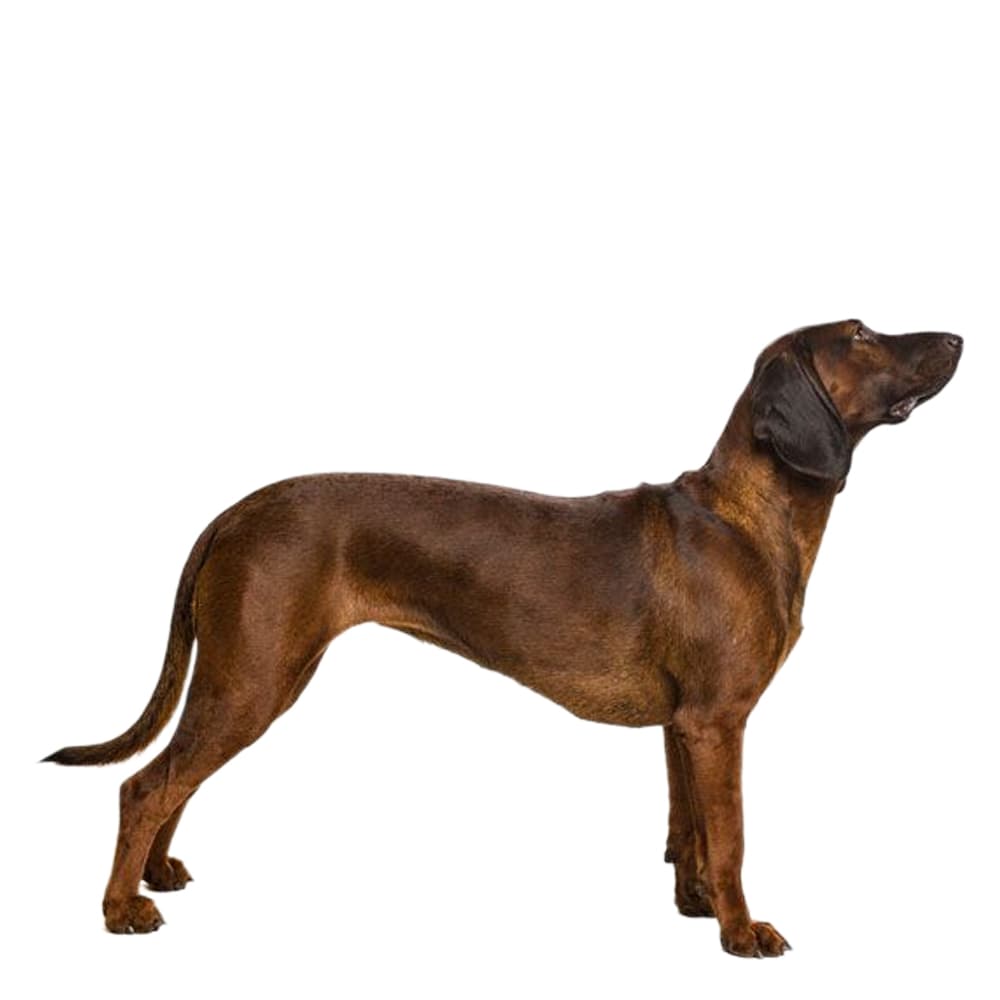Discover your dog's connection to this breed and 200+ others



Discover your dog's connection to this breed and 200+ others


The Bavarian Mountain Scenthound, also known as the Bavarian Mountain Hound and in the German language as the Bayerischer Gebirgsschweißhund, is a breed of working dog originating from Germany. These dogs are distinguished by their robust and agile bodies, as well as their notable scenting skills. The breed's roots are traced back to the early 20th century in Bavaria, Germany, where it was developed for the specific purpose of tracking wounded game in the mountainous regions. Its lineage includes the ancient Hanoverian Hound. The breed's exceptional scenting ability, combined with its agility and endurance, made it a natural choice for hunters seeking an adept tracking dog.
The Bavarian Mountain Hound may suffer from cerebellar abiotrophy, demodicosis, ectropion, elbow and hip dysplasia, entropion, epilepsy, progressive retinal atrophy, and retinal dysplasia. Genetic testing is recommended, including for the following additional conditions: hyperuricosuria, degenerative myelopathy, and progressive rod-cone degeneration.
Bavarian Mountain Scenthounds are known for their calm and balanced temperament. They tend to be reserved, but not aggressive or shy. They are extremely loyal and form strong bonds with their families. While they are calm indoors, these dogs require plenty of exercise and will not do well in an inactive household. Their working dog heritage also means they thrive when given tasks and challenges, such as scent games or tracking exercises.
As a breed developed for tracking, these dogs have a strong instinct to follow scents and can be stubborn when on a scent trail. This instinct, combined with their independent nature, may make training a challenge for inexperienced dog owners.
The Bavarian Mountain Scenthound is a hardworking breed, noted for its scenting ability and dedication to its task. This breed is suitable for an active family who enjoys outdoor activities and can provide the necessary mental and physical stimulation this intelligent, independent dog requires.
A canine genetic lineage is a group of individuals or entire breeds that descended from common ancestors predating modern breed formation. Often these lineages are associated with a ‘type’ of dog with a unique historical working role and associated behaviors (e.g., herding, scent hunting, etc.).
Scent Hounds were historically used as hunting dogs. They were bred for their exceptional sense of smell, which is also a defining factor of this lineage of dogs. Scent hounds also have a distinctive bark which sounds more like a howl, this was developed to communicate with their hunters. Many breeds within this lineage were bred to work in groups, and have a strong pack mentality. Scent Hounds tend to have a stronger drive to follow their nose instinctually than their human counterpart. Scent hounds are also known for their endurance and stamina, these traits allow them to follow scents over long distances and for long periods of time.
Example breeds with ancestry from this lineage include Basset Hound, English Foxhound, and Dachshund.
In 1912, the Club for Bavarian Mountain Scenthounds was established in Munich, Germany.
These agile and athletic scent hounds were bred to work on the steep mountains slopes of Bavaria.
The Bavarian Mountain Scenthound is considered to be one of the most skilled breeds in terms of scenting ability.
https://www.ukcdogs.com/bavarian-mountain-hound
https://www.akc.org/dog-breeds/bavarian-mountain-scent-hound/
DOI:10.1002/9781119540687
https://www.thekennelclub.org.uk/breed-standards/hound/bavarian-mountain-hound/ Fogle, B. (2009). The encyclopedia of the dog. DK Publishing.
Recommended by top vets with decades of experience
21 breeds
64 genetic health markers
50 genetic trait markers
